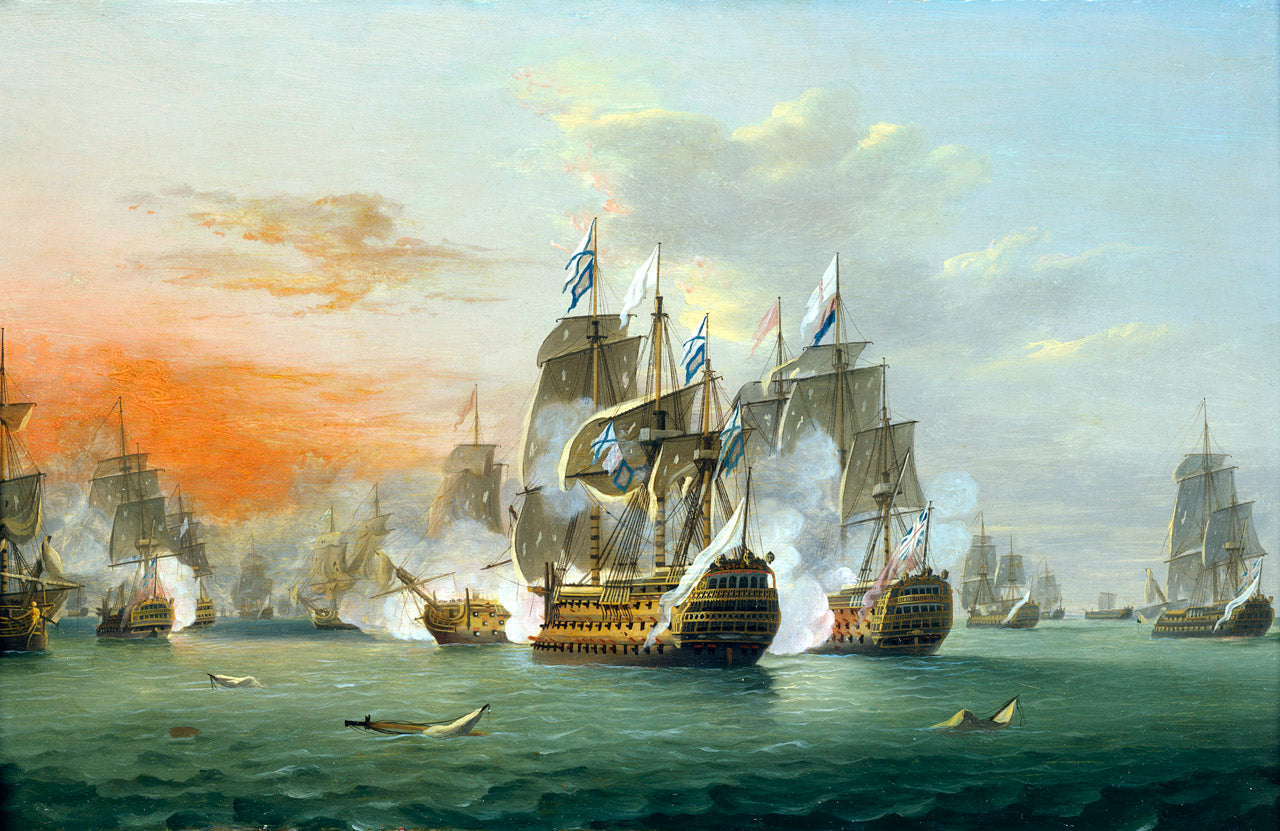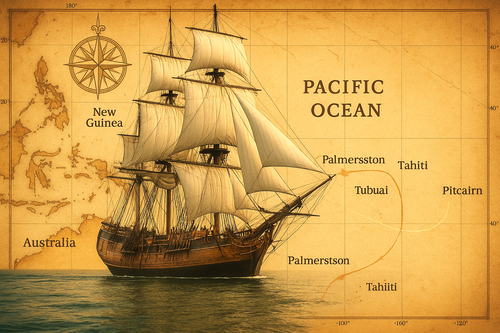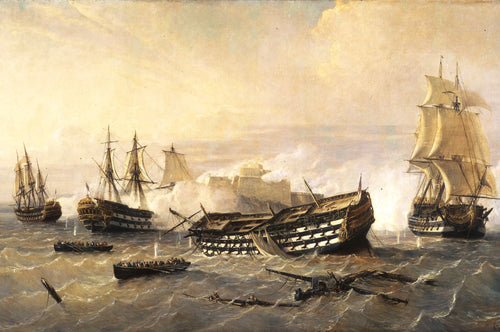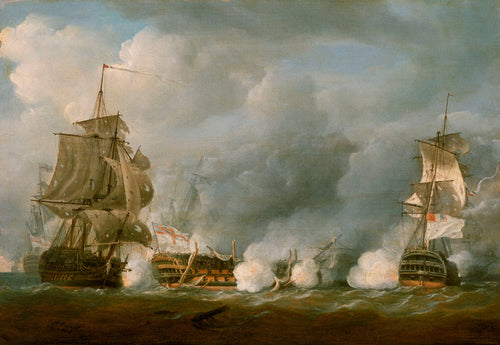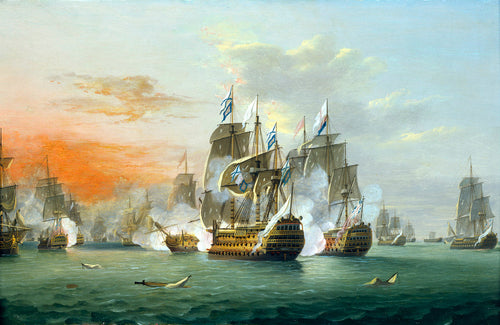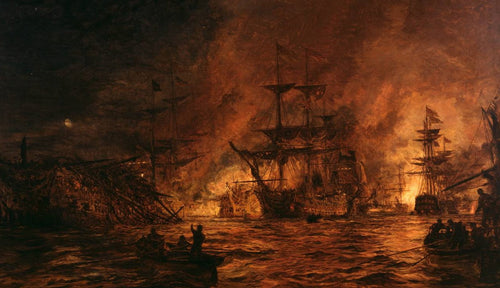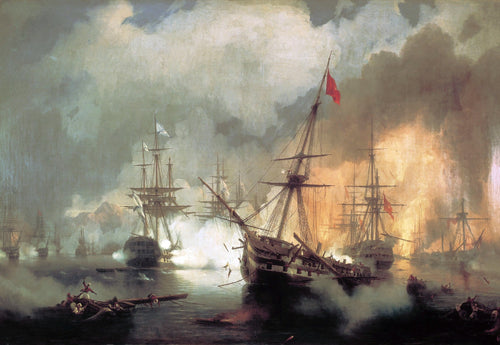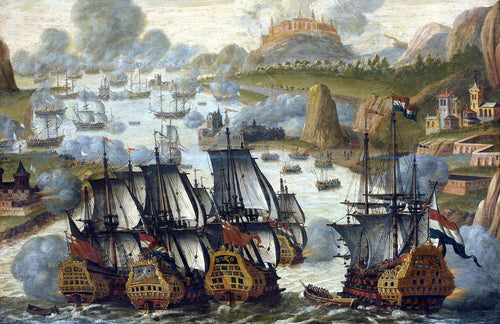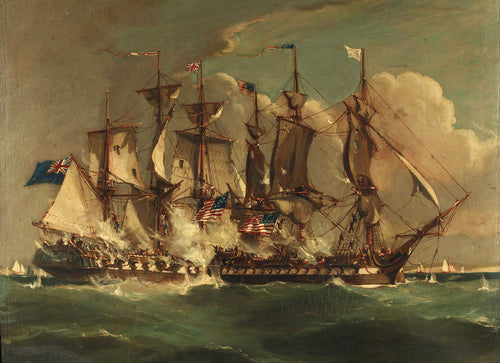The Battle of the Saints, also known as the Battle of Dominica, was a naval battle fought on April 12, 1782, between the British and French fleets during the American Revolutionary War. The battle took place near the island of Dominica, which is located in the Lesser Antilles of the Caribbean.
The British fleet, led by Admiral George Rodney, consisted of 36 ships, while the French fleet, led by Admiral Francois Joseph Paul, the Comte de Grasse, consisted of 33 ships. The French fleet was tasked with protecting the French colonies in the Caribbean, while the British fleet was charged with intercepting and defeating the French fleet. The battle began in the early morning hours of April 12 when the British fleet encountered the French fleet. The two sides exchanged broadsides, and the battle quickly escalated into a full-scale engagement. Despite being outnumbered, the British fleet was able to use its superior tactics and firepower to gain the upper hand.
 (Painting by Nicholas Pocock (1740 – 1821) – Buy Print
(Painting by Nicholas Pocock (1740 – 1821) – Buy Print
One of the key moments of the battle occurred when Admiral Rodney ordered his ships to break the French line. This manoeuvre allowed the British ships to engage the French ships more effectively, and it proved to be a decisive factor in the battle. The battle lasted for several hours, with both sides sustaining heavy losses. The French lost seven ships, while the British lost only one. The British fleet was able to capture several French ships, including the flagship of the French fleet, the Ville de Paris.
 (The end of the César by François Aimé Louis Dumoulin (1753-1834)
(The end of the César by François Aimé Louis Dumoulin (1753-1834)
One captured French ship named the 'César' was totally dismasted during the battle and then captured by HMS Centaur. A prize crew of 58 men and one lieutenant were placed on the ship and the crew were locked below deck. Here around 9pm they accidentally started a fire whilst breaking into the officers liquor cabinet. The fire spread and at 10.30pm reached the magazine, causing it to explode. The César was destroyed, killing 400 French sailors and 50 British members of the prize crew. To make things worse, during the 90 minutes before the explosion they were jumping in the water, not realising that the ship was surrounded by sharks. The ship's captain, Bernard de Marigny, who was injured and confined to his cabin, was killed in the explosion.
The Battle of the Saints was a significant victory for the British, as it allowed them to gain control of the Caribbean and secure their hold on the American colonies. The victory also marked the end of the French naval presence in the Caribbean, and it effectively ended France's involvement in the American Revolutionary War. The battle is remembered as one of the most significant naval battles of the 18th century, and it is often cited as an example of British naval supremacy during this period. The victory was celebrated throughout Britain, and Admiral Rodney was hailed as a hero for his role in the battle.
In conclusion, the Battle of the Saints was a decisive victory for the British, which had a significant impact on the outcome of the American Revolutionary War. The battle is remembered as a testament to British naval power and strategy, and it continues to be studied by historians and military strategists today.
